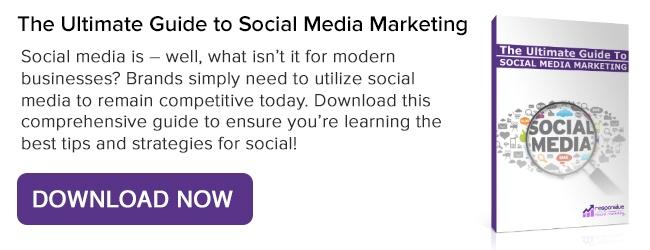
There are currently 80 million Millennials in the U.S. – nearly one-fourth of the total population. And, with an annual buying power of $200 billion, they are the most lucrative market. Plain and simple: Nearly every marketer today is making Generation Y a priority – or at least working to understand what drives and delights this instrumental group.
One key element that justifies Millennial domination of the marketplace is the fact this new marketing style – which we’ll delve into in just a minute – isn’t just a fad. Here, we’ll discuss 8 important tactics for marketing to the demographic of the hour and explain why these tactics are lasting ones.
1) Authentic Content Empowers Them
According to AdAge, Millennials are spending an average of 25 hours per week online – and they’re craving content-driven media. They’re scouring websites, blogs, and social media because they feel empowered by all of the remarkable content they’re discovering. They’re also sharing, liking, pinning, tweeting, snapping, forwarding, and commenting on all of their findings to impart this sense of empowerment to the online community. So, what makes this type of content really resonate with this group? Millennials trust what they feel is authentic.
Interacting in a user-centric environment is what engages them, as 43 percent of Millennials rank authenticity over content when consuming news. Today, young shoppers’ attitudes and behavior are largely inspired by people they know in person or online, or even strangers who share their interests on social networks. Millennials carry these “advisors” with them on their smartphones and everywhere they go. They trust relevant, authentic opinions from real product users they can relate to. In fact, 84 percent of Millennials say user-generated content has at least some influence on what they buy, and 73 percent say it’s important to read others’ opinions before purchasing.
For brands that want to successfully reach Gen Y-ers, they simply need to speak their language. People ages 18 to 34 will perk up when hearing or reading words that could have come from the mouths of their peers, as these messages warrant comfort and trust. When you offer your audience content they would proudly share with others, you’re building a real brand-consumer relationship.
Taco Bell successfully speaks to Millennials with their creative “Millennial Word of the Week” tactic. The brand incorporates the lingo of their young consumers, which is curated by company employees in their 20s, into its messaging. Here’s an example of how Taco Bell works to speak to its young audience in a relatable way.

2) Outbound Marketing is Out
Millennials want to feel connected and involved when it comes to their purchases, and traditional marketing does not encourage this. Outbound marketing methods, like magazine ads, direct mail campaigns, and radio spots, do not impress Millennials. In the mind of a young consumer, these campaigns are impersonal and company-focused, filled with logos and void of any real substance. This generation demands more customer-driven, personalized marketing. A 2014 survey, Engaging Millennials: Trust and Attention Survey, reveals that 84 percent of Millennials don’t trust traditional advertising.

This Medill Northwestern University pop-up ad is an example of outbound marketing that comes across as disruptive, annoying, and unsolicited. Millennials know what they want and, since they’re so digitally savvy, know how to find it online. That’s why these young consumers do a lot of their research via blogs, forums, and YouTube videos. If they decide they want to go for their master’s degree, odds are that an in-your-face pop-up ad wasn’t the deciding factor (not to mention they’re surely taxed by student loan debt). While the ad is relevant to the person’s search history and may put the idea in the their head, seeing it wasn’t their choice. Millennials feel empowered to make their own online choices – which are usually inspired by their peers or other authentic content.
3) Inbound Marketing is, Well, In
Millennials support businesses that are dedicated to improving their customers’ lives with informative content. Rather than product and service listings, Millennials want e-books, whitepapers, blog posts, videos, and other how-to information – and that’s inbound marketing. They appreciate thought leadership and expertise, so this is your company’s chance to provide killer content that ranks highly in Google and show young consumers that you’re the industry buff – especially since Millennials are 44% more likely to trust experts (who happen to be strangers); they are 247% more likely to be influenced by blogs or social networking sites.
Mac Cosmetics’ YouTube page is a great example of how brands can offer their audience how-to’s from the experts. People want helpful guidance, and when your company takes the time to provide that, they appreciate it and respect what you stand for. Mac is giving young viewers exactly what they want, where they’ll find it. 60% of Millennials (vs. 29% of non-Millennials) are engaged in uploading videos, images, and blog entries to the Web – so utilizing YouTube is perfect. A Millennial makeup lover is much more likely to tell her friends to check out Mac’s makeup tutorials than show her friends a print ad of Mac talking about how great they are.

Mac Cosmetics’ YouTube page is a great example of how brands can offer their audience how-to’s from the experts. People want helpful guidance, and when your company takes the time to provide that, they appreciate it and respect what you stand for. Mac is giving Millennials exactly what they want, where they’ll find it. A Millennial makeup lover is much more likely to tell her friends to check out Mac’s makeup tutorials than show her friends a print ad of Mac talking about how great they are.
4) Organically Made For Them = Notable
Millennials want to feel like your content was created with their interest (not their wallet) in mind. When this is the case, they are more organically introduced to purchasing your products or services. Without ever being “pushy,” your educational content helps build strong brand-consumer relationships. People appreciate honesty, and brands with transparent campaigns win.

And, what’s more transparent than encapsulating the spontaneous adventures of travellers in hostels – with skinny dipping? Hostelworld’s new Meet the World advertising campaign, which features genuine travellers that are strangers upon meeting and share a once in a lifetime adventure of skinny dipping, celebrates real travellers in real places who crave adventures, not souvenirs. This successfully speaks to Millennials because it screams “Live!” instead of “Buy!” – and that’s something that’ll stick with them. Most young people would rather have an unforgettable experience than seek out luxury, and Hostelworld gets that.
5) Content Marketing is Forever Enticing
If you think content marketing is a passing trend, think again! Here are some key examples of how content marketing has succeeded over the years:
- 1895: John Deere introduces The Furrow, a free publication with tons of farming tips and techniques to help farmers become more profitable. Today, it’s available in more than 40 countries and in 12 different languages.
- 1900: Michelin Tires released a 400-page auto maintenance guide with everyday drivers in mind, and also included travel tips. 35,000 copies were distributed free of charge before the company started selling the manual for a profit.
- 1904: Jell-O circulated free copies of its own cookbook, highlighting creative ways to use the unique product. In 2 years, the company saw sales increase to over $1 million annually.
- 1966: Nike released a 19-page booklet titled Jogging. It was filled with advice on enjoying running as a recreational activity, including posture and striking tips. This brought running, as a sport, to America, and it never once mentioned a Nike shoe.

We know that Millennial consumers value awesome, authentic content – so it looks like content marketing isn’t going away anytime soon. The inbound methodology, with its emphasis on strong and consistent content creation, is not a fad and will continue to win over your ideal customers.
6) Collaboration is Key
Today, Millennials are interested in having a say and becoming product co-creators. In fact, 42 percent said they are interested in helping companies develop future products and services. In our society, companies usually create products and hope that their target market will consume them. When it comes to Millennials, they want to be more involved with how products get created. So, companies that enable them to be part of the product development process will be more successful. Marketers need to focus on building relationships with consumers by fueling their self-expression and helping them establish their own personal brand.

Coca-Cola used online co-creation to gather expressions of its brand promise “Energizing refreshment.” They prompted their audience to unleash their creativity by interpreting Coca-Cola as an energizing refreshment in whatever style or format they wished. Coca-Cola gathered these videos, animations, illustrations, and photographs to use in its marketing campaigns worldwide. This method was mutually beneficially in that Millennials all over the world got to pour a bit of themselves into a product made for them, while helping Coca-Cola bring fresh authenticity to the market.
7) Use > Ownership
Millennials prefer use over ownership, with 35 percent of respondents in a 2014 report from The Intelligence Group saying they would rather pay full price to access an item when they need it as opposed to owning it. These shoppers would rather rent, share, and barter than buy.

In this new “sharing economy,” mobile services and apps such as Spotify and Airbnb, and fashion sites like Rent the Runway and Relapse Clothing, have taken advantage of this crucial opportunity. This is also a new trend in the automotive industry. According to an analysis recently released by car-buying platform Edmunds, Millennials are acquiring cars – they’re just not buying them. Instead, they’re opting to lease more luxurious, tech-forward cars than they could otherwise afford to buy, such as Ram, GMC, and Lexus models. Capitalizing on this “sharing” mentality is a smart move for modern businesses, especially those targeting Millennials. Offer more creative and feasible options so that, in case consumers can’t yet buy, they can at least try.
8) Millennials Just Want To Have Fun
Young consumers increasingly see the act of researching and browsing for a purchase more compelling than the purchase itself. Millennials tend to crave the experience of shopping more than the purchase. In other words, online exploration is becoming more than a means to an end, with many young shoppers viewing e-commerce as a form of entertainment. This phenomenon has been coined as “Fauxsumerism.” Pinterest is a perfect example of how the shopping journey can also become an act of personal expression. This social platform, which helps users catalog prospective purchases by curating collections of items of interest, accurately reflects the facts that 40 percent of Millennials make wish lists of products they want to buy (The Intelligence Group).

Successful companies understand that young consumers want to have an enjoyable online browsing experience, which is why brands like Etsy show off their products on Pinterest, making perusing and pinning fun and social. No matter what platform you use, you should market to Millennials in entertaining ways in order to effectively engage them and inspire activity.
These 8 tips when marketing to Millennials will endure for years to come because this group is wired for authentic, content-driven, honest experiences that cater to who they are and their voices they yearn to share. Empower them with the pieces they’re looking for in this puzzling world and remind them that, because of their generation, the bigger picture is looking brighter.
Want to effectively engage Millennials? Then delight them where they’re hanging out: social media! Check out the Ultimate Guide to Social Media Marketing to learn how to do it right!
![]()







